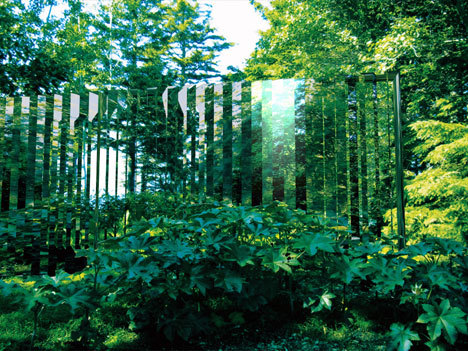Camouflage Gardening:
Guerrilla Gardening and Edible Landscaping
Camouflage gardening is one way to grow food without having to worry too much about others stealing it. Another name for this method of growing food is stealth gardening or stealth farming. This is a method of growing a food crop so that it does not look like food. Survivalists sometimes use this technique to protect their food supply during a crisis.

Nurturing a camouflage garden in plain sight can be easier than you may think. Some tips on doing this type of gardening successfully include:
- Planting decorative plants at the front of the garden so that they are the most visible plants in the area
- Planting ornamentals with similar looking vegetables works well to distract the untrained from a bountiful crop
- Place crops along the fence where they will be less visible if you have a wooden or concrete fence. If you have chain-link or fencing that allows others to see in, plant shrubs or flowers first and put your garden behind these
- Flowering plants that are taller than the food crops provide great cover
- Put vegetables or other edible plants in between flowers in a flower garden
- Root vegetables such as carrots are ideal for this type of farming as most people will not recognize them for what they are since the vegetables are under the earth
- Put in plants that are not easy to notice such as green peppers as against red peppers
- Beans and peas are also good choices as they produce a lot and are not plants that will stand out readily
- Pumpkin has large leaves which can easily hide from view smaller vegetables like turnips and beet. Some herbs also serve the same purpose and herbs are less likely to be stolen
Some people actually create a natural fence between their crop and prying eyes by allowing some weed and shrubs to grow up around the edible plants. If you go this route, make sure that the weeds are not parasitic and fast growing as these can choke plants and reduce the yield.
Some stealth gardeners avoid neatly prepared rows for their edibles that easily indicate the presence of a garden. Instead, they plant vegetables and roots in various places in their yards. Others plant edible landscaping, concentrating on those plants that don't look like any type of food that most people would recognize.
Camouflage Gardening in Containers
Container gardening is another great way to fool others into thinking that what they are looking at is ornamental, rather than real food. Additionally, it is easy to move containers inside to protect them when necessary.
In a sense, camouflage gardening is also useful in
making your garden less attractive to animals. Shielding a Vegetable Garden with plants that deer hate for instance will make it less likely
that they will devour your crops. Creating a scent barrier that repels
certain animals is a good way to ensure that your crops will grow to
maturity.
Camouflage gardening is important for anyone who is serious about having a ready supply of food, especially vegetables, during a shortage. Knowing which natural chemicals will deter different animals is a good first step. Many gardening sites have information as to which plants will keep rabbits, deer and gophers out of a garden.
Plants with strong odors such as lilac, thyme and lavender are good choices to help create a scent barrier. Another trick is to use two or three plants that animals dislike for each edible plant. Plants with thorns standing before the real garden will also help to prevent unwanted visitors.
The next time you are thinking of putting in some food crops, why not try camouflage gardening. It is not only fun, it is also a great way to grow various crops without drawing attention to what you are doing.
Those who practice this type of gardening do so not only to ensure a ready supply of food in case of a food shortage, but also to keep thieves from taking off with the fruits of their labor. You just never know when having a good supply of vegetables or other food crops will mean the difference between survival and starvation.
Return from Camouflage Gardening to Backyard Farming





New! Comments
Have your say about what you just read! Leave me a comment in the box below.